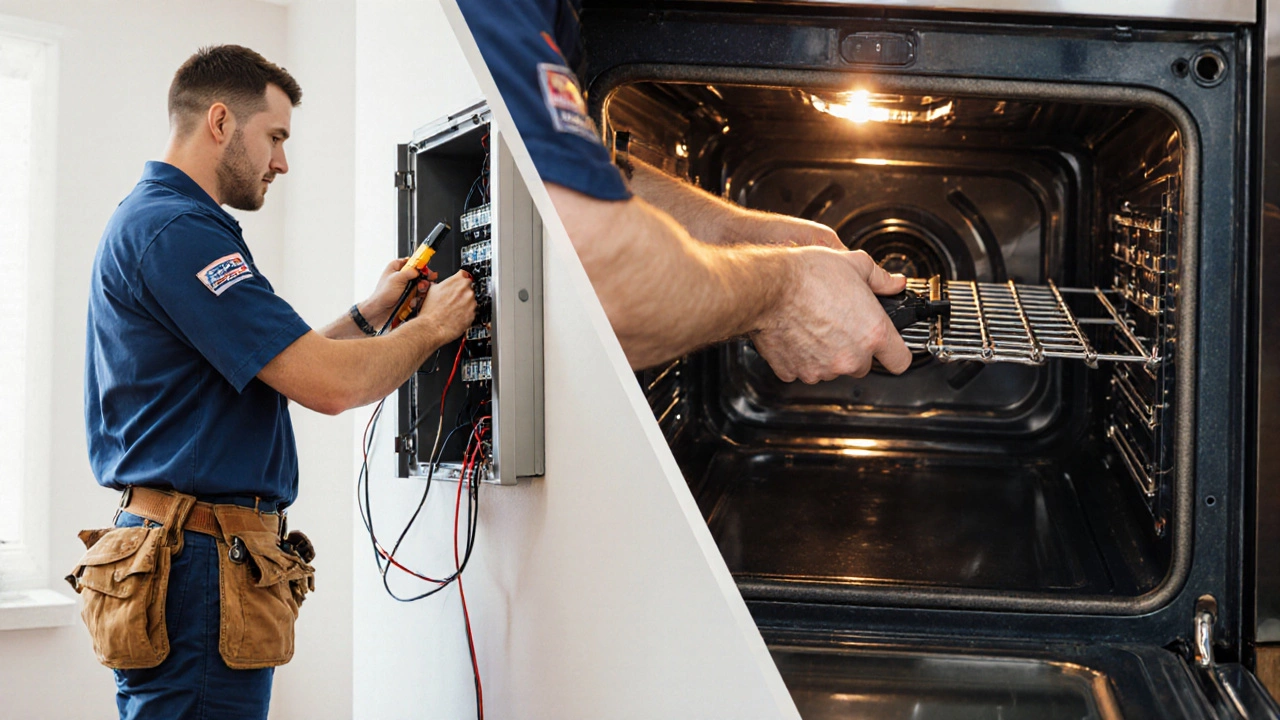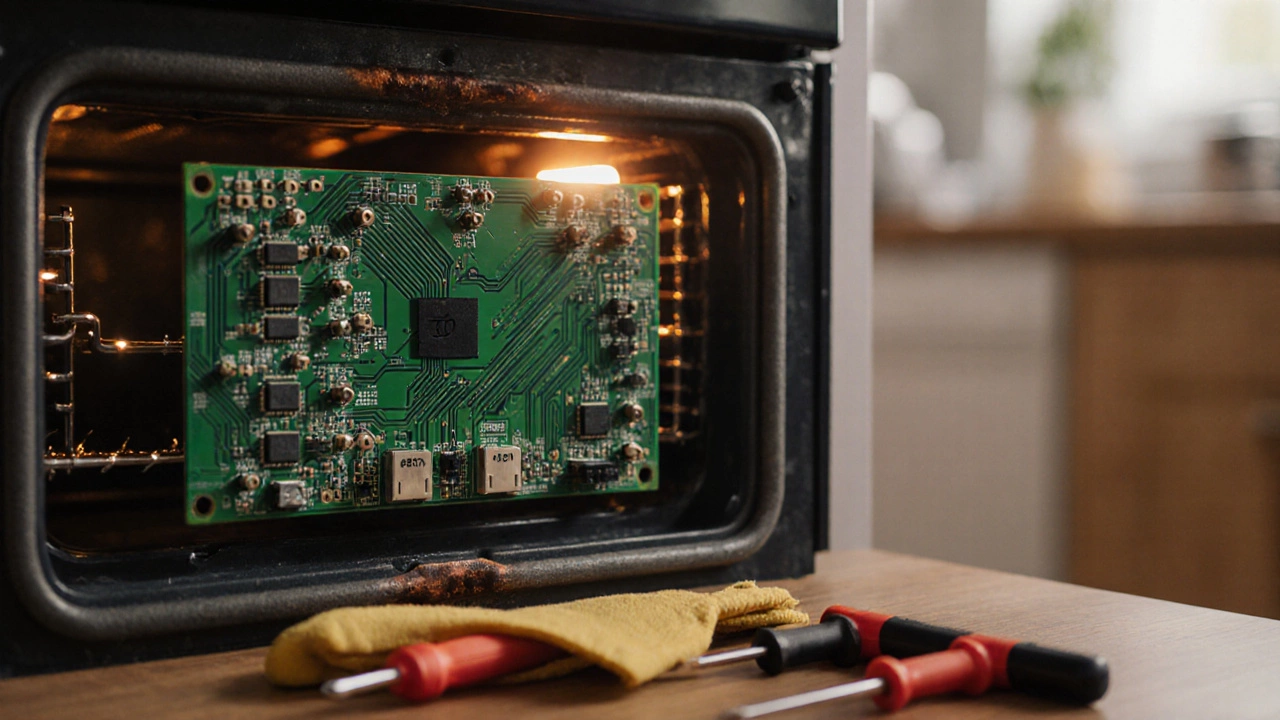
Wondering if an electrician can fix your electric oven? Learn when to call an electrician vs. an appliance technician, common causes of oven failure, and how to avoid costly mistakes.
Got an oven that’s acting up? Whether it’s not heating, showing weird codes, or making odd noises, most problems have a simple cause you can check yourself before calling a pro.
The first thing to look at is power. Make sure the oven is plugged in firmly and the circuit breaker hasn’t tripped. A loose plug or a blown fuse will stop any heating element from working.
Next, check the heating element itself. If you see a broken coil, black spots, or a visible crack, the element probably needs replacing. Most electric ovens have two elements – one for baking and one for broiling – and either one can fail.
Temperature sensors can also go bad. The sensor is a thin metal rod inside the oven cavity. If it’s dirty or damaged, the oven may think it’s already at the right temperature and shut off the heat. A quick visual check and cleaning with a soft brush can sometimes solve the issue.
Another frequent culprit is the door latch. If the door doesn’t close all the way, the oven’s safety switch stops the heating cycle. Look for broken hinges or a mis‑aligned latch and adjust or replace it.
Start with the basics: turn the oven off, wait a minute, then turn it back on. A reset can clear minor electronic glitches that trigger error codes.
Look up the error code on your oven’s manual or the manufacturer’s website. Many codes point to specific problems, like a faulty thermostat or a communication error between the control board and the element.
If your oven has a digital display, try a hard reset. Unplug the unit, wait 5 minutes, then plug it back in. This often restores normal operation after a power surge.
When the oven heats but the temperature is off, use an oven thermometer. Place it inside and set the oven to 180 °C (350 °F). If the reading is more than 20 °C off, the thermostat or control board may need calibration or replacement.
Inspect the wiring behind the oven panel. Look for loose connections, burnt marks, or frayed wires. Only touch wires if the power is completely off and you feel comfortable; otherwise, it’s safer to let a qualified electrician handle it.
If your oven has a convection fan that runs but the heat stays cold, the fan motor or the fan’s wiring could be at fault. Look for a whirring sound without temperature change; a blocked vent or a dirty fan blade often fixes the problem.
A faulty control board can cause random shut‑offs or unresponsive buttons. Spotting a burnt smell or melted plastic on the board usually means it needs replacement. This job involves removing the back panel and swapping the board, which most DIYers prefer to leave to an expert.
If none of these steps solve the problem, it’s time to call a local repair service. A professional can test the high‑voltage components, replace elements, or repair the control board safely.
Regular maintenance can keep your oven running longer. Clean the interior after each use, wipe down the door seal, and schedule a yearly check‑up if you use the oven heavily.
Remember, safety comes first. Never work on the oven while it’s plugged in, and always wear gloves when handling hot parts. With a few simple checks, you can often fix the most common oven issues and save time and money.
Give us a call in South Shields for fast, trustworthy oven repairs – we’ll get your kitchen back on track without the hassle.

Wondering if an electrician can fix your electric oven? Learn when to call an electrician vs. an appliance technician, common causes of oven failure, and how to avoid costly mistakes.

Learn when swapping an oven control board makes sense, how much it costs, DIY steps, and when to opt for a new oven instead.

Not sure if you should fix your electric oven yourself or call a pro? This article breaks down what makes an oven repair simple or complicated, what you can tackle with basic tools, and what’s usually best left to a technician. You’ll get real tips and common pitfalls, plus some surprising facts about oven problems. By the end, you’ll know whether grabbing a screwdriver or the phone is the smarter move. Don’t get burned by a quick fix gone wrong.